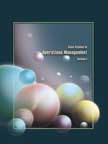Six Sigma at GE




|
|
ICMR HOME | Case Studies Collection
Case Details:
Case Code : OPER015
Case Length : 12 Pages
Period : 1995 - 2002
Organization : GE
Pub Date : 2002
Teaching Note : Available
Countries : USA
Industry : Varied
To download Six Sigma at GE case study
(Case Code: OPER015) click on the button below, and select the case from the list of available cases:

Price:
For delivery in electronic format: Rs. 300;
For delivery through courier (within India): Rs. 300 + Rs. 25 for Shipping & Handling Charges
» Operations Case Studies
» Case Studies Collection
» ICMR HOME
» View Detailed Pricing Info
» How To Order This Case
» Business Case Studies
» Case Studies by Area
» Case Studies by Industry
» Case Studies by Company
Please note:
This case study was compiled from published sources, and is intended to be used as a basis for class discussion. It is not intended to illustrate either effective or ineffective handling of a management situation. Nor is it a primary information source.
|
|
<< Previous
"Six Sigma - GE Quality 2000 - will be the biggest, the
most personally rewarding, and, in the end, the most profitable undertaking in
our history. We have set for ourselves the goal of becoming, by the year 2000, a
Six Sigma quality company, which means a company that produces virtually
defect-free products, services and transactions."
- Jack Welch, CEO, GE, at the company's annual meeting, in
1996.
Introduction
|
By 2001, with revenues of $ 125.91 billion and net earnings of $ 13.68 billion,
the US-based General Electric Company (GE) was easily the largest diversified
company in the world. Out of the company's 24 different businesses, some were so
large that they could independently feature in the Fortune 500 list of
companies.
GE operated in more than 100 countries and had over 250 manufacturing plants in
26 countries. The company was one of the largest employers in the world with
strength of around 275,000 employees. GE remained the only company listed in the
Dow Jones Industrial Index that had been included in the original index in 1896.
|
|
GE's products ranged from plastic for small compact discs to powerful
locomotives. The company was the world leader in light bulbs and power
generation equipment. Its diagnostic medical imaging equipment were well
known all over the world. In addition, GE had a strong presence in the
financial services, consumer durable goods and entertainment businesses
(Refer Exhibit I). In the late 1990s, GE initiated various measures to
transform itself into a services and solutions-oriented company.
|
|
GE was well
known for its strong focus on R&D and quality since its inception. The
GE Research and Development Center was one of the world's largest and
most diversified industrial laboratories. It employed 1,600 people that
included around 1,100 scientists, engineers and technicians. The center
provided GE's businesses and strategic partners with cost effective
technical innovations for various products, processes and services.
During the 1990s, quality became a major issue of concern for the
company.
This made GE's CEO Jack Welch (Welch) to consider the benefits being
derived due to a quality initiative called Six Sigma by companies such
as Motorola1. |
Though Welch felt that quality programs were only theoretical
and did not show any substantial results, he was impressed by the Six Sigma
concept and decided to implement it at GE in 1995.
Six Sigma at GE
- Next Page>>
|
|



